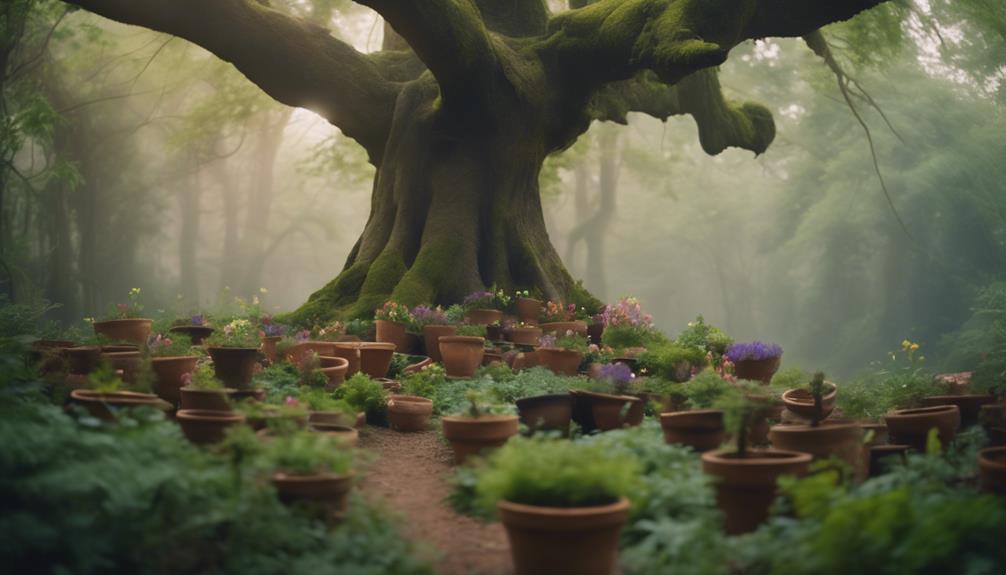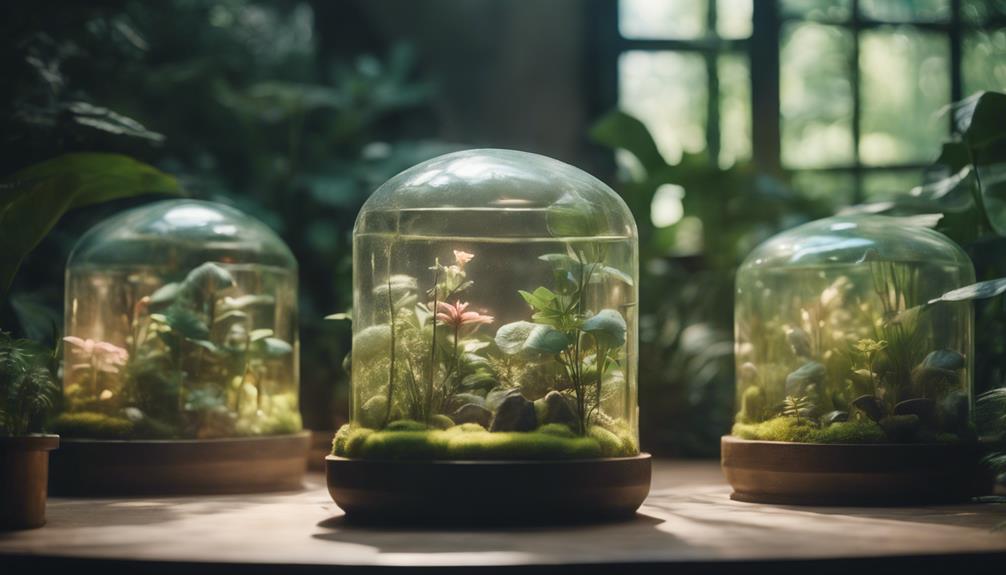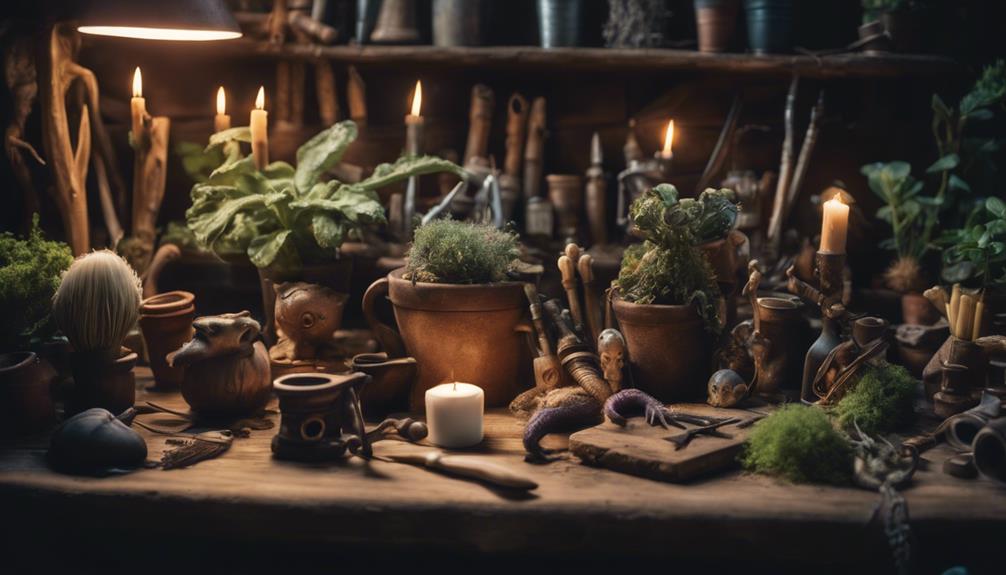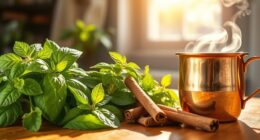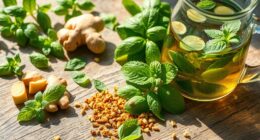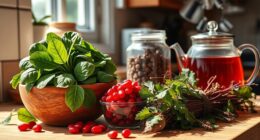We explore the magical plant world in Harry Potter's Herbology class, where students like Harry discover the extraordinary properties of plants like Mandrakes, Devil's Snare, Wolfsbane, Wormwood, and Asphodel. In Herbology classes, we learn about these plants' potent properties, from Mandrakes' healing powers to Devil's Snare's suffocating abilities. As we continue, we'll uncover more about the medicinal marvels and deadly dangers of these magical plants, and how they're handled with care in Herbology lessons.
Key Takeaways
• In Herbology, students study magical plants like Mandrakes, Devil's Snare, and Wolfsbane to understand their properties and uses.
• Mandrakes possess healing properties, while Devil's Snare can suffocate victims, and Wolfsbane aids werewolves in maintaining human form.
• Herbology students learn about Wormwood's dual properties and Asphodel's association with the afterlife to appreciate their importance.
• Magical plants like Gillyweed, which enables underwater breathing, are also studied to explore their medicinal applications.
• Understanding these magical plants is crucial in potion-making and provides a deeper appreciation for the natural world.
Magical Plants of Hogwarts
In the Hogwarts Herbology class, we explore the fascinating world of magical plants, where we uncover species like Mandrakes, Devil's Snare, Wolfsbane, Wormwood, and Asphodel, each with its unique properties and uses.
As students, we learn about the Mandrake's essential properties, making it a pivotal ingredient in potions. We also study Devil's Snare, a dark, vine-like plant capable of suffocating its prey, highlighting the importance of understanding the dangers of magical flora.
Wolfsbane, a plant believed to ward off werewolves, is another key specimen we examine, understanding its role in managing lycanthropy. Wormwood, with its healing properties, is also a significant plant we explore, investigating its symbolism related to regret and absence in the wizarding world.
Lastly, we explore Asphodel, a perennial flowering plant with mythological connections to the dead, and its role in potion-making. Through our studies, we gain a deeper appreciation for the diverse world of magical plants and their significance in the wizarding world.
Herbology in the Wizarding World

As we venture beyond the fascinating world of magical plants, we find ourselves immersed in the broader study of Herbology, a discipline that encompasses the understanding and utilization of both magical and non-magical plants in the wizarding world.
At Hogwarts School of Witchcraft and Wizardry, Herbology is a required class, taught by Professor Pomona Sprout, where students learn to care for plants, understand their magical properties, and utilize specific spells.
In the wizarding world, Herbology plays an essential role in magical education, potion-making, and aiding in various magical tasks. It's an integral component of a well-rounded magical education, providing students with a deep understanding of the natural world and its applications in magic.
Some key aspects of Herbology include:
- Studying magical plants like Mandrake, Devil's Snare, Wolfsbane, and Wormwood for their unique properties and uses
- Understanding the importance of Herbology in magical education and potion-making
- Learning specific spells and care techniques for magical plants
- Appreciating the role of Herbology in aiding various magical tasks
Potent Properties of Plants

We explore the enchanting world of Potent Properties of Plants, where magical flora exhibit extraordinary abilities that can either heal or harm. In the domain of Herbology, we find plants with remarkable properties that have a significant impact on the wizarding world.
Mandrakes, for instance, possess healing properties, making them a valuable asset in magical medicine. On the other hand, Devil's Snare is a menacing plant that can entangle and suffocate its victims, showcasing the darker side of magical flora.
Wolfsbane, a key ingredient in potions for werewolves, plays an essential role in Professor Lupin's transformations. Wormwood, with its dual properties of healing and deadliness, is another plant that highlights the complexity of magical plants.
Asphodel, associated with the afterlife, adds another layer of depth to the study of Herbology. These magical plants demonstrate the importance of understanding their potent properties, as they can be both beneficial and detrimental.
Medicinal Marvels of Magic

Delving into the medicinal marvels of magic, we uncover a world of enchanting flora that have revolutionized the wizarding world's approach to health and wellness. Magical plants, studied in Herbology, possess extraordinary healing properties, making them essential for potions and remedies.
- Mandrake, with its human-like form, is renowned for its remarkable healing properties.
- Wolfsbane is essential for creating potions that help werewolves maintain their human form.
- Gillyweed, with its unique underwater breathing properties, opens up new possibilities for aquatic exploration.
- Some magical plants, like Venomous Tentacula, may be hazardous, but understanding their properties helps wizards develop countermeasures and treatments.
Deadly and Dangerous Species

Among the shelves of the greenhouses, we've encountered plants that heal and protect, but now we're about to venture into the darker side of Herbology, where deadly and dangerous species lurk.
In this domain, we find plants that can harm or even kill. One such plant is the Devil's Snare, a deadly vine-like plant that suffocates its prey. Then there are the Mandrakes, resembling humanoid figures, whose potent properties can be fatal if not handled carefully.
We've also learned about Wolfsbane, a key ingredient in Professor Lupin's potion, believed to repel werewolves. These plants aren't only fascinating but also require extreme caution when handling.
As Herbology students, we're taught to approach these deadly and dangerous species with respect and care. We're reminded that even in the wizarding world, there's a fine line between life and death.
Frequently Asked Questions
What Are the Herbology Plants in Harry Potter?
We're curious about the magical plants in Harry Potter's Herbology classes. Did you know that over 20 magical plants are mentioned in the series?
Among these, we learn about Mandrakes, known for their healing properties, and Devil's Snare, infamous for entrapping victims.
We also discover Wolfsbane, used in potions to manage werewolf transformations, and Wormwood, associated with magical symbolism.
What Is the Magic Plant in Harry Potter?
We're often asked about a single 'magic plant' in Harry Potter, but the truth is, there isn't just one. The wizarding world is home to many magical plants, each with unique properties and uses.
From Mandrake's healing powers to Devil's Snare's deadly grasp, each plant has its own distinct characteristics. Wolfsbane helps werewolves, Gillyweed allows underwater breathing, and Wormwood is used in healing potions.
The magic lies in the diversity of these plants and their various applications.
What Is the Study of Plants Called in Harry Potter?
We're diving into the wizarding world to uncover the answer to an essential question: what's the study of plants called in Harry Potter?
Imagine a whimsical greenhouse, where magical flora thrives under the care of aspiring wizards.
In this fantastical setting, the study of plants is none other than Herbology.
This required class at Hogwarts, led by Professor Sprout, teaches students to nurture and harness the unique properties of magical plants.
What Are the Plant Classes in Harry Potter?
We're diving into the magical world of Harry Potter to explore the plant classes.
In the wizarding world, Herbology classes are where students learn about magical plants like Mandrakes, Devil's Snare, and Wolfsbane. These classes teach us about the properties, uses, and care of various plants.
We learn how to cultivate and harness their magical properties, from healing to transformation management. It's fascinating to discover the diverse range of magical plants and their applications in the wizarding world.
Conclusion
As we venture into the mystical domain of Herbology, we uncover the hidden wonders of magical plants. These enchanted species hold the power to heal, protect, and even harm.
Like the intricate threads of a tapestry, they weave together to form the rich fabric of the wizarding world. As we explore the secrets of these plants, we begin to unravel the mysteries of the natural world, and our understanding of magic deepens.
In this world of wonder, we find ourselves entwined with the ancient magic that surrounds us.



